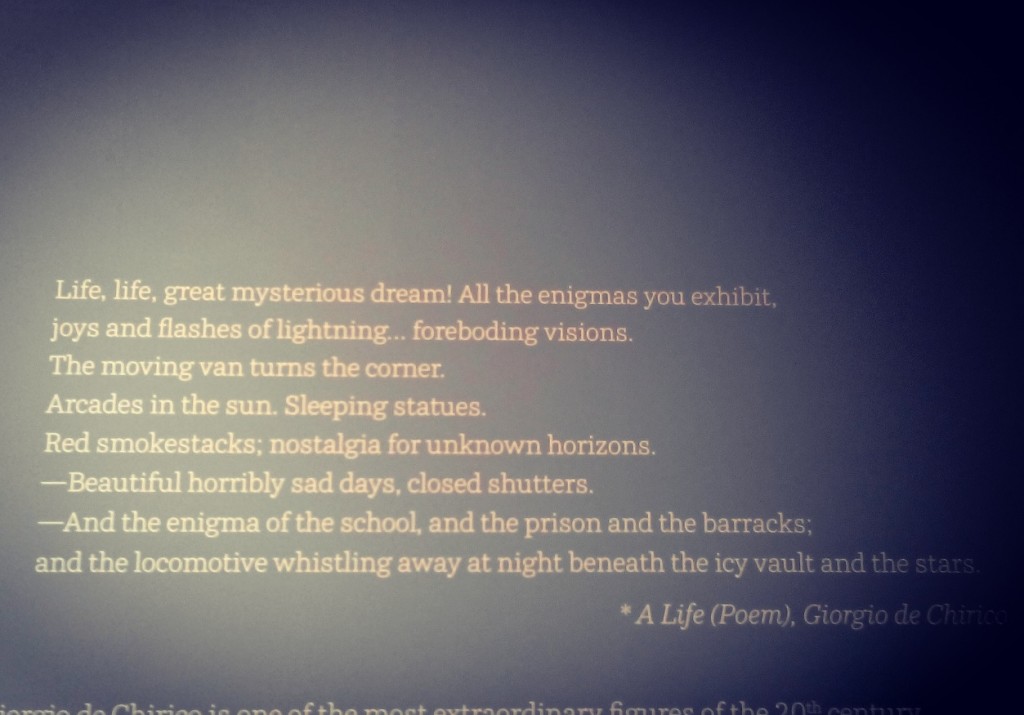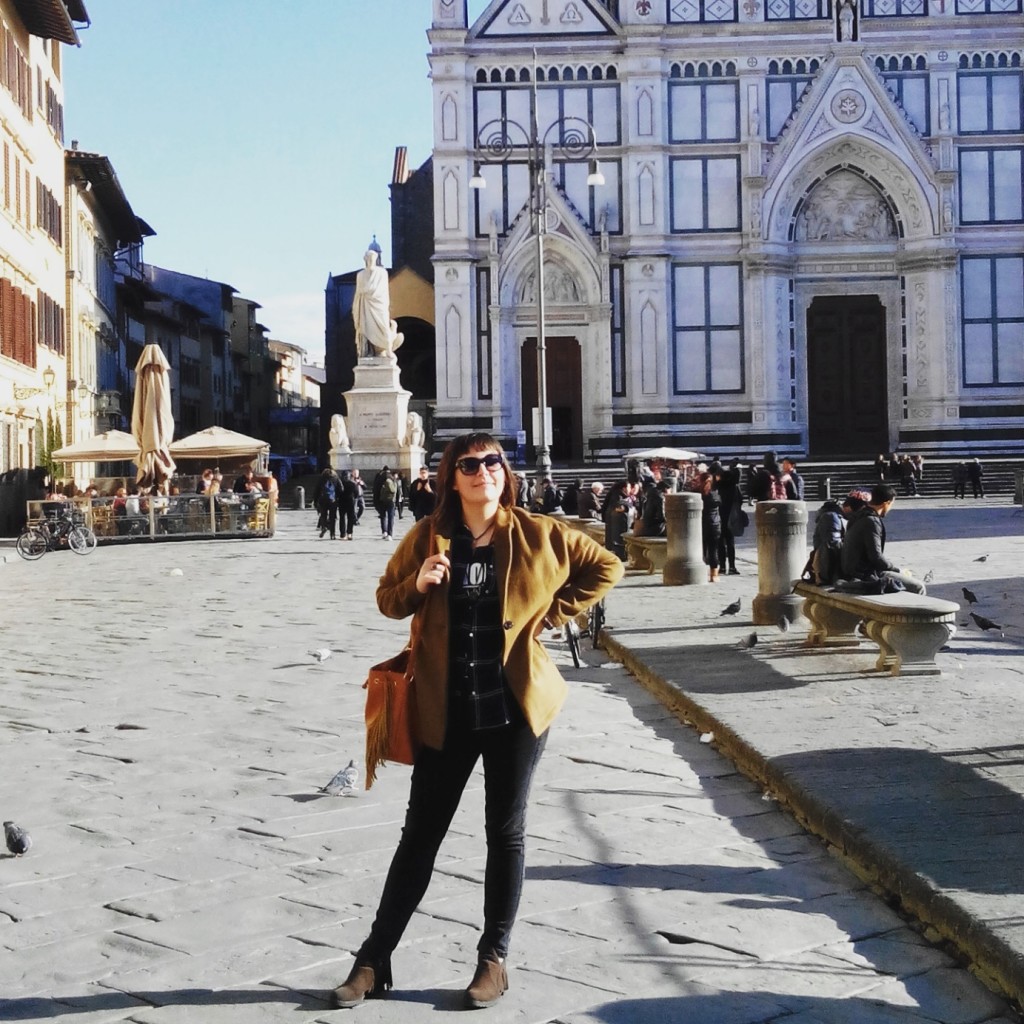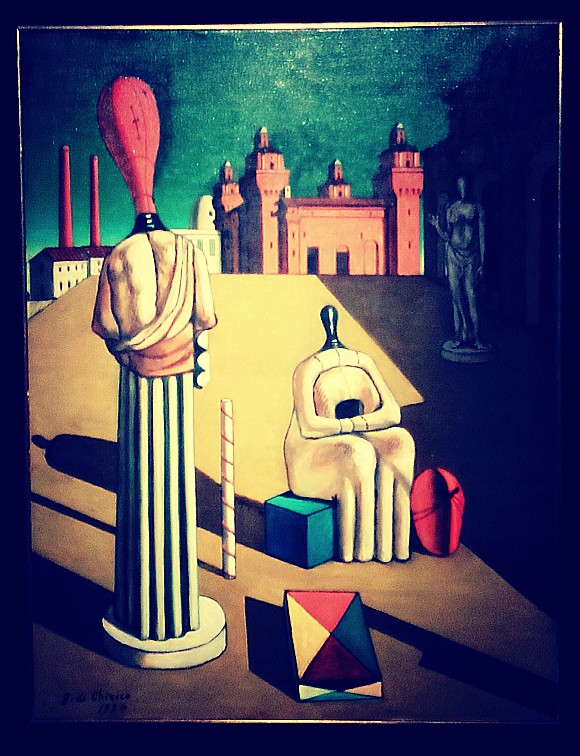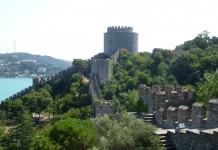
My first year in Art school, l was required to purchase a large hardcover book entitled ‘Janson’s History of Art’. A formidable tome of a publication, costing over 100 dollars, and several inches thick, it was soon to be the bane of my studying existence as I never wanted to carry it home in my backpack. One of the first paintings whose image I remember seeing as I browsed its glossy pages, was of a work called The Mystery and Melancholy of a street by Italian Artist Giorgio De Chirico. In amongst the 20th century images of Picasso’s cubism and Dali’s melting clocks was a haunting painting of an empty street square; A caravan with its door half open, a girl pushing a hoop down a road and eerie shadows menacingly lurking towards the covered arcades. This masterpiece seemed to embody a nostalgic longing for centuries past, with an auspicious and wary nod towards the anxieties of the modern age. If a painting could have spoken for my frantic and intense undergraduate mind, this one would have been (and continues to be), it.

Giorgio De Chirico was born in Greece in 1888 and spent his life traveling to many places that no doubt informed his art, but perhaps the most influential of all would be the Piazzas of Italy – in particular the beautiful Santa Croce piazza in Florence, where the artist was said to have had his first metaphysical revelation. Shortly before WW1 he coined the term ‘Metaphysical Art’, which would later become a great influence to the Surrealists – art as dreamscape and poetry, with everything embedded with deeper layers of symbolism and meaning, and nothing quite being ‘what you see is what you get’. With a fascination for classical art and a look to the past, De Chirico’s work often referenced Baroque and neo-Roman forms, with a sense of curiosity, and through an examination of contemporary spaces and modern existence in old surroundings. If you want to experience this state of dislocation and strangeness in Istanbul, try wandering through the decaying beauty of Şişhane on an eerily empty Sunday morning, or a deserted backstreet in Fatih at dusk. The metaphysical sense of wonder and peculiarity that De Chirico tried to convey in his works is evident in these ephemeral moments; if bricks and mortar and streets and statues could talk, what worlds would they speak of, what words would they whisper?

Enigma of the World, currently on display at the Pera Museum until May 1st, is a brilliant collection of De Chirico’s work spanning from his early proto-surrealist years, right up until his last paintings of the late 1970’s. Comprised of large paintings, small lithographs and sculptures and spread out over two floors, one gets a true sense of the unique and somewhat ‘lone wolf’ standing of this remarkable, prolific artist. It is difficult to pinpoint which of the works on display is an early or late piece, as he switched his style a few times, from extremely neo-classical representations such as ‘The Turk’ (which many snooty surrealists ridiculed him for), to his archetypal modern surreal cityscapes and strange minimalist still-life prints. As De Chirico himself said, ‘Art is the fatal net which catches these strange moments on the wing like mysterious butterflies, fleeing the innocence and distraction of common men.’ An afternoon spent at the Pera Museum to view this wonderful Art exhibit is indeed the most pleasant escape from such distractions.

All uncited images courtesy of Julia Totino.










